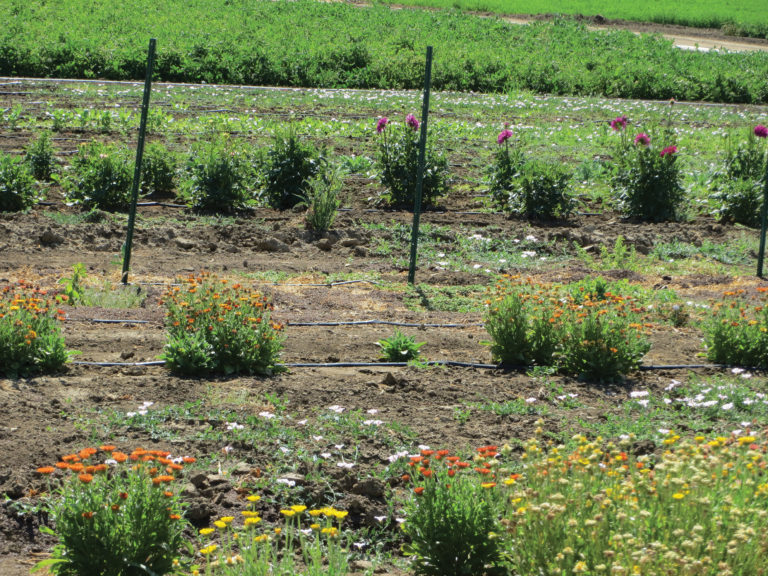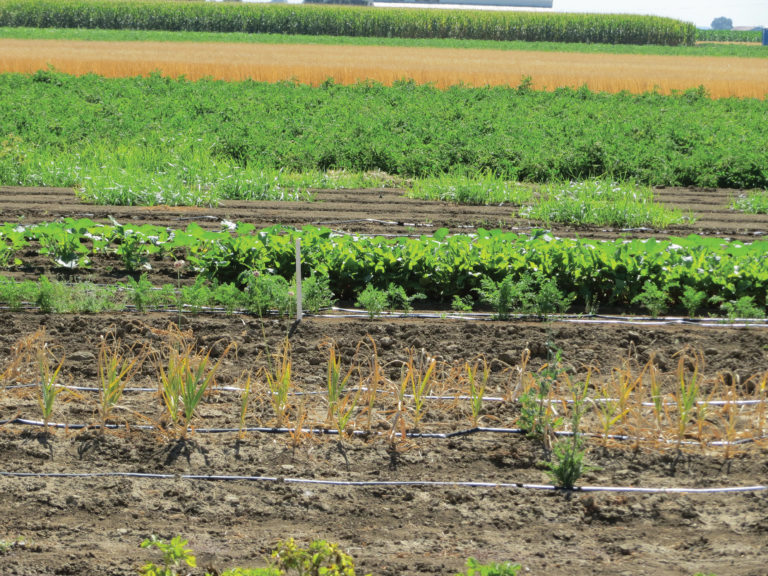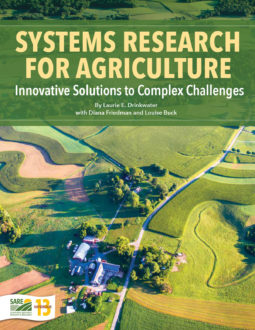
The Sustainable Agriculture Farming Systems (SAFS) study, begun in 1988, was a pioneering systems project at the University of California (UC), Davis that looked at best farming practices in two- and four-year rotations of tomatoes, safflower, corn, wheat and dry beans. The objective was to generate information on sustainable growing techniques that would be of practical use to producers in the Sacramento Valley. A key to the project’s success was the close collaboration and involvement of farmers.
“From beginning to end, farmers were intimately involved in the planning, the execution and the interpretation of results,” says UC Davis agronomist Steve Temple, who coordinated the SARE-funded project.
Including farmers on this team provided multiple, crucial “reality checks” for research plans, as one example from the early years shows.
The researchers had designed a study that involved seeding tomatoes in organic, low-input and conventional test plots all on a single day. The intention of same-day planting was to create a level playing field for the plants that would simplify data analyses later.
However, producers recruited to work with the research team offered a dose of reality, noting that conventional and organic or low-input farmers would not plant tomatoes on the same day. Conventional farmers would plant sooner to take advantage of early market incentives, while organic and low-input farmers would wait to give their cover crops more time to grow and would use transplants rather than seeds to make up for the late start.

The researchers took their producer colleagues’ advice. They direct-seeded the conventional systems in late March and put transplants into the organic and low-input systems two weeks later. In the end, they demonstrated that transplanting in organic and low-input systems effectively increased yields.
Incorporating farmer input “made the research more difficult, but it made it more realistic,” says Bruce Rominger, one of the producers involved in the decision.
As another example of the important contribution made by growers, Temple points to one year’s corn yields. The low-input system had far outperformed the conventional system, and researchers initially attributed the performance to better nitrogen nutrition in the low-input system.
But when growers examined the results and walked the test plots, they noticed a major difference in how the systems had been planted. Corn was planted in two rows per 60-inch bed in the conventional system and in single-row, 30-inch beds in the other systems. This meant that the conventionally grown corn had less access to ground moisture, which is why it did not perform as well. “To sort it all out, we really counted on farmers to visit the plots and look over the data,” Temple says.
In the beginning, project organizers put a lot of time into working with cooperative extension to identify farmers in the area who would be a good fit for the project. Temple says the goal was to represent a variety of backgrounds.
Growers in the SAFS project were not compensated. However, Rominger says he found the experience invaluable because it put him in touch with cutting-edge research that he was able to apply to his own operation—about 3,000 acres of both organic and conventional crops. In any research project involving farmers, he says, it is important to recruit growers who have already expressed an interest in the topic or in research in general, rather than to try to bring in people who do not appear interested. That is because a healthy relationship between farmers and researchers relies on mutual give-and-take.
Growers need to be patient with researchers, who do not have the freedom to move as fast as growers do on the farm. “Farmers are used to deciding something and then doing it the next day,” Rominger says. “At universities, it just doesn’t happen that way.”
Also, Rominger says it became frustrating to sit in meetings where funding was discussed at great length—a topic that is essential to any research project, but one that farmers cannot help with. He suggests that project coordinators keep farmers in the loop on funding issues but that they remain mindful not to spend much time discussing funding, or similar issues of little interest to farmers, on farmers’ time.
Systems researchers who involve farmers “need to truly want to use that input and not just do it because the foundation that funded them wants farmers on board. That attitude is not going to take you very far,” Rominger says.
